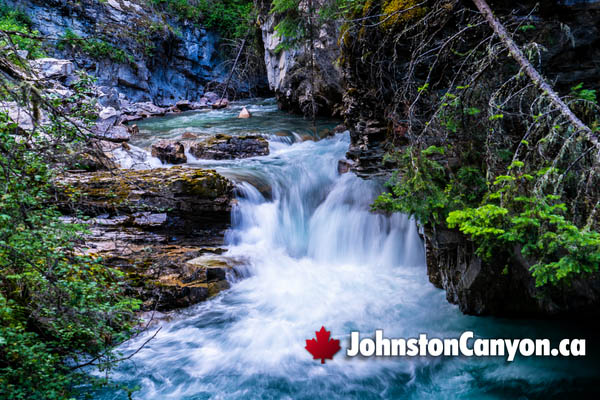Book Banff National Park
Book Banff National Park Activities and AttractionsBanff is Canada's most visited National Park. Banff's eastern gate is located approximately 100 km west of Calgary in the Canadian Rocky Mountains, and stretches 240 km along the eastern slope of the Continental Divide.
Originally set aside to preserve sulphur hot springs for public use, Banff's towering peaks and beautiful meadows make it among Canada's most incredible holiday areas.
Book Banff National Park Activities and Attractions. Popular Canadian Rockies Tours.

Things to Do in Banff National Park
Columbia Icefields

» go to Columbia Icefields
Book Banff notes:
Jasper and Banff National Park's Columbia Icefields. Explore Athabasca Glacier and the Columbia Icefields.

Banff Gondola Ride Admission

» go to Banff Gondola Ride Admission
Book Banff Notes:
Enjoy stunning panoramas of six different mountain ranges on the state-of-the-art Banff Gondola. Soar to the top of Sulphur Mountain for a bird's-eye view of town and vistas of Canada's first national park.
Banff Lake Minnewanka Cruise

» go to Banff Lake Minnewanka Cruise
Book Banff Notes:
Majestic views of the Canadian Rockies while cruising beautiful Lake Minnewanka on this panoramic 1-hour interpretive cruise. Learn Native folklore while scanning the lake shore for big-horned sheep, deer, bald eagle and even the occasional bear. Cruise over to Devil's Gap for incredible views of the Prairies and surrounding mountains.
Jasper SkyTram

» go to Jasper SkyTram
Book Banff notes:
Take a ride aboard the Jasper SkyTram, the longest and highest guided aerial tramway in Canada, offering stunning panoramic views of Jasper National Park.

Rocky Mountain Train Tickets

» go to Rocky Mountain Train Tickets
Book Banff notes:
6-Day Rocky Mountaineer from Vancouver to Banff, Icefield, Jasper, Lake Louise. OR 6 Day VIA Rail Banff - Jasper Rocky Mountain Train Tour from Calgary to Vancouver.

Johnston Canyon

» go to Johnston Canyon
Book Banff Notes:
Johnston Canyon is one of Banff National Park's most iconic and accessible natural attractions. Johnston Canyon's Hiking trailhead is easily accessible via Banff National Park's Bow Valley Parkway.
Tour Moraine Lake

» go to Tour Moraine Lake
Book Banff notes:
Moraine Lake is a stunning glacially-fed lake located in Banff National Park, in the Canadian Rockies of Alberta, Canada. Famous and iconic, Moraine Lake in the Canadian Rockies and is renowned for its breathtaking turquoise-blue waters and stunning surrounding mountain peaks.

